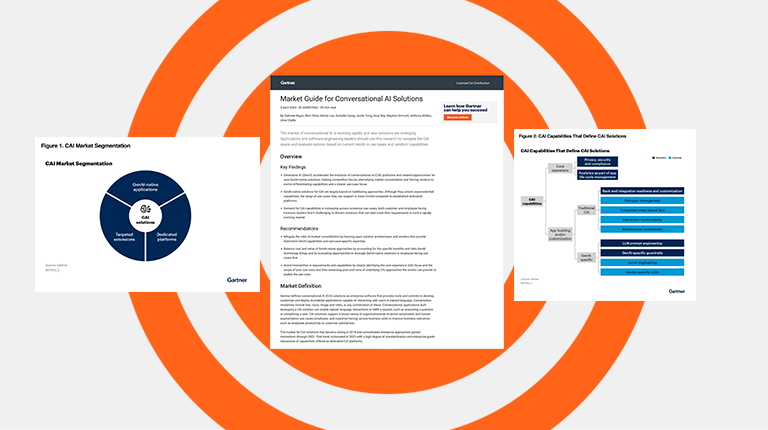We hear a lot about the impact of Conversational AI on companies and their customers. But there tends to be an air of mystery surrounding the making of Intelligent Virtual Assistants, or any AI-powered product for that matter. Today, we’re pulling back the curtain.
This week, we spoke with Michael Johnston, Director of Research & Innovation here at Interactions, and Ethan Selfridge, our Conversational AI Manager. Michael and Ethan were recently awarded a patent, Accelerating Agent Performance In A Natural Language Processing System. We sat down with them to hear about how this project came about, and what it’s like behind the scenes when rethinking what’s possible in Conversational AI.
To start, can you each share a quick overview of your role?
Michael: I direct the Research and Innovation team. My team focuses on our core machine learning capabilities, dialogue systems, analytics, and human-assisted AI.
Ethan: Up until recently, I was on the research team with Michael where I was an individual contributor. The Conversational AI team, where I am now, is currently productizing and building on a lot of the work we did in Research, enabling innovations to directly impact our products. The biggest difference now is that there’s less risk in the projects that we take on.
Why is there more risk on the research side?
Ethan: The short answer is that with research, you’re betting that one of a hundred things will work out, and those are good enough odds to warrant giving it a try. Now, everything I work on is put into a product (unless it’s a failure). Coming from my research background, I was used to having time to fail; it came with the territory. On the product side, working quickly has a direct impact on the business, so I need to be extra careful with how I spend my time.
Michael: Right. Product is at a different point in the funnel. It’s not that research is off in the blue sky, it’s very much applied, but our teams are looking at different stages in the development of new technologies. You could compare the research team to venture capital, with a portfolio of investments in different ideas. VCs don’t expect every company to succeed, but they cast a wide net to make sure several will. If you stay too close to your headlights, there’s a lot of stuff you’ll never catch.
Sounds like the research team has a good amount of flexibility. In general, how do you decide where to focus?
Ethan: Whenever people don’t think we can do something, that’s great motivation to figure out a solution. On top of that, our work often originates from our attempts to “wow” our customers. If we build out a vision for what’s possible, and that demo raises eyebrows, that shows us there’s value in what we’re creating and gives us some direction.
Michael: Right. And the origins of our work are sometimes unrelated to, or a small part of, the end result. With our omnichannel product, for example, we set out to help the sales organization create an added feature for an existing client that allowed their customers to switch channels mid-conversation. Once we started on that project and saw what was possible, that’s when we doubled down to move it down the funnel.
The same is true of the more recent human assist patent. We didn’t start out with the intention of creating a system for accelerating agent performance at scale. It all started from working on a mobile multimodal demo and integrating it with human assist capability. We quickly realized how adding new applications to our platform was increasing the learning curve for human analysts. To solve this problem, we created a cleaner, more user-friendly interface, then augmented it with AI capability to reduce the learning curve and accelerate analyst response time. There wasn’t a big, structured project for this. It was more opportunistic, we asked “what if …” and we let something great grow out of it.
As your projects evolve over time, is being awarded a patent typically your end goal?
Michael: No, it’s not. The things we work on are directly related to improving the current products or making new ones. Along the way, three things can come about: the generation of IP (patents), research publication, and open source contributions. Patents are critical to the value of the company, but being awarded patents isn’t our primary goal. It’s mostly a by-product of working on innovative and novel applications of AI technology.
What are your goals then? How do you determine whether you’ve had a successful month or year?
Michael: It varies a lot. We have both subgoals as well as a broader goal that we work towards. Our broader goal is to expand what our platform understands, maximizing the value we provide to customers. Our subgoals are much more diverse. They range from increasing automation rates, to creating and applying novel machine learning algorithms, to creating technology that can look at collections of text or voice recordings of conversations and automatically induce dialogue flow. These are smaller yet critical elements that help broaden our platform’s scope of understanding.
Is there anything you’re working on now that you’re particularly excited about?
Ethan: Right now, we are extending our platform to provide new conversational capabilities to our development team and customers. This will not only allow us to build far more intelligent systems quicker, but will support rapidly integrating new innovations as well. This project is still in the works, so more to come on this front.



